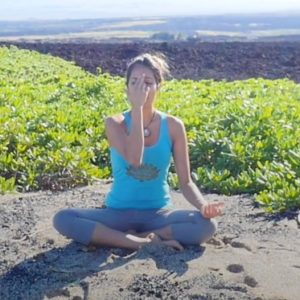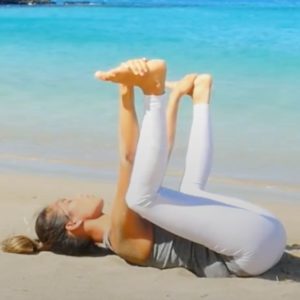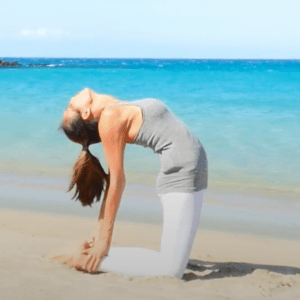Today’s Poses: Bow and Dolphin Yoga poses
Bow and Dolphin Yoga poses
Bow Pose – Dhanurasana
Bow Pose Dhanurasana has been named after the shape the body takes while performing it – that of a bow. Dhanu means bow; Asana means posture or pose.
Steps
- Lie on your stomach with your feet hip-width apart and your arms by the side of your body.
- Fold your knees, take your hands backward and hold your ankles.
- Breathing in, lift your chest off the ground and pull your legs up and back.
- Look straight ahead with a smile on your face.
- Keep the pose stable while paying attention to your breath. Your body is now curved and taut as a bow.
- Continue to take long deep breaths as you relax in this pose. But bend only as far as your body permits you to. Do not overdo the stretch.
- After 15 -20 seconds, as you exhale, gently bring your legs and chest to the ground. Release the ankles and relax.
Benefits
- Strengthens the back and abdominal muscles
- Stimulates the reproductive organs
- Opens up the chest, neck, and shoulders
- Tones the leg and arm muscles
- Adds greater flexibility to the back
- Good stress and fatigue buster
- Relieves menstrual discomfort and constipation
- Helps people with renal (kidney) disorders
Dolphin Yoga Pose
Downward-Facing Dog (Adho Mukha Svanasana) is one of the most popular yoga poses, but it can be very painful and difficult for those with wrist pain or carpal tunnel syndrome. This variation, called “Dolphin Pose,” is done on the forearms, which relieves wrist pressure while providing all of the benefits of Downward Dog.
Steps
- Begin on your hands and knees. Align your wrists directly under your shoulders, and your knees directly under your hips. The fold of your wrists should be parallel to the top edge of your mat, and your middle fingers should point directly forward.
- Lower your elbows to the floor directly beneath your shoulders. Keep your forearms parallel to each other and to the side edges of your mat. Distribute your weight evenly across both forearms.
- Tuck your toes and lift your knees off the floor. Reach your pelvis up toward the ceiling, then draw your sit bones toward the wall behind you. Keep your knees bent as you lengthen your spine and broaden across your shoulder blades.
- Then, gently begin to straighten your legs. Bring your torso and legs into the shape of an “A.” Do not walk your feet closer to your hands — keep the extension of your whole body. If your upper back begins to round, bend your knees again until your spine is straight.
- Draw your shoulder blades into your upper back ribs and toward your tailbone. Widen across your collarbones.
- Align your ears with your upper arms. Relax your head, but do not let it dangle. Gaze between your legs or toward your navel.
- Hold for 5-25 breaths.
- To release, exhale as you gently bend your knees and come back to the floor. Press back into Child’s Pose (Balasana) to rest.
Benefits of Dolphin Pose
Dolphin Pose strengthens and stretches the shoulders, arms, upper back, and legs. It helps bring flexibility to the spine, hamstrings, calves, and arches. In addition, it provides all of the benefits of Downward-Facing Dog, including:
- Relief from headaches, insomnia, fatigue, and mild depression
- Improved memory and concentration
- Relief from stress and anxiety
- Improved digestion
- Relief from back pain
- Prevention of osteoporosis
- Relief from sinusitis, asthma, flat feet, and menstrual discomfort




